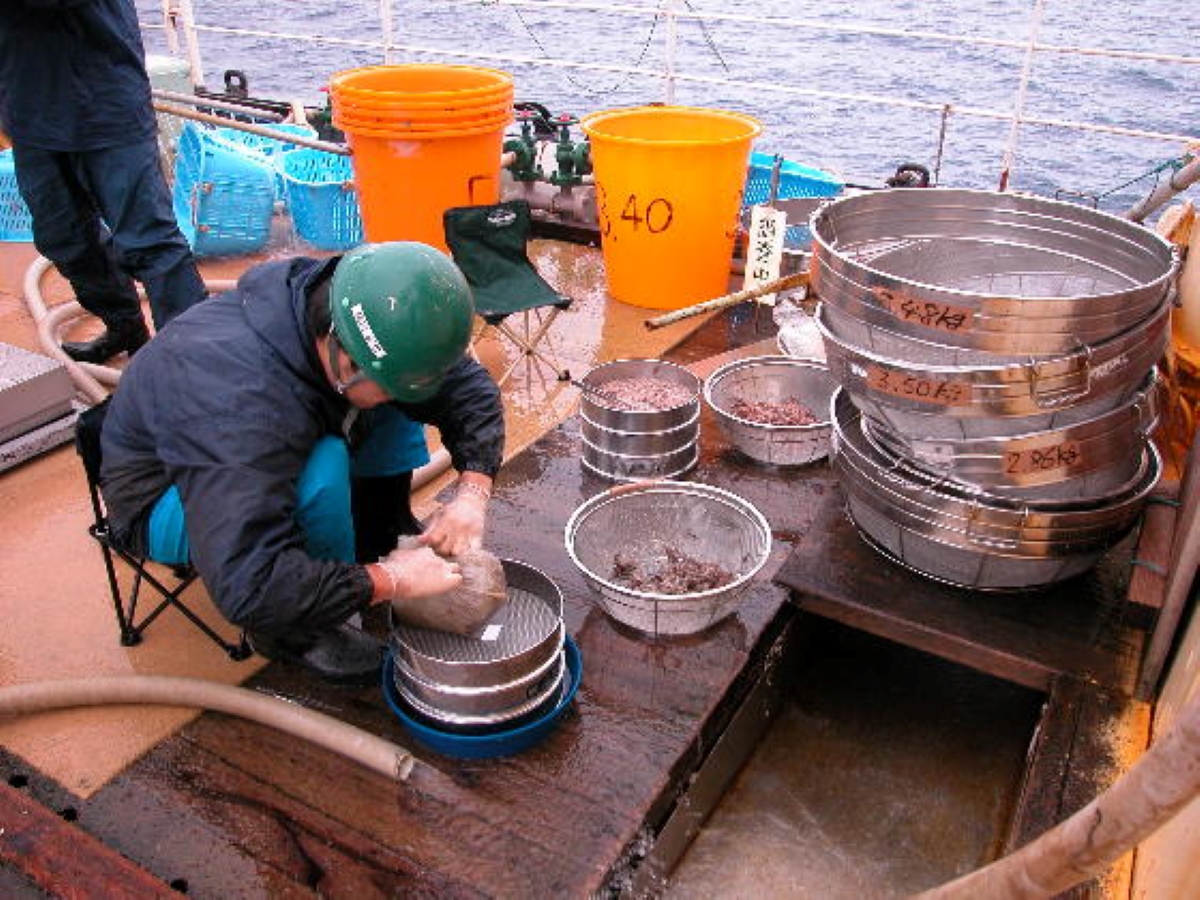Above: Tsutomu Tamura analyzing the stomach contents of a whale.
~
The world’s resources are finite. It is crucial that we don’t consume until everything is gone, that we leave resources for future generations.
For this reason, at times we must determine, “How much can we sustainably catch or harvest?” This is of course true for whales.
The utilization of whales as a sustainable resource requires strict resource management. This responsibility falls on the Ecosystem Studies and Population Biology Division and the Stock Assessment and Management Division at the Institute of Cetacean Research in Japan.
Stay with us as we will speak to the managers of these divisions, who have spent many years working on resource management at the institute, about the kinds of research they conduct each day.
In this interview, we talk with Tsutomu Tamura, who heads both research divisions at the Institute of Cetacean Research. Excerpts follow.
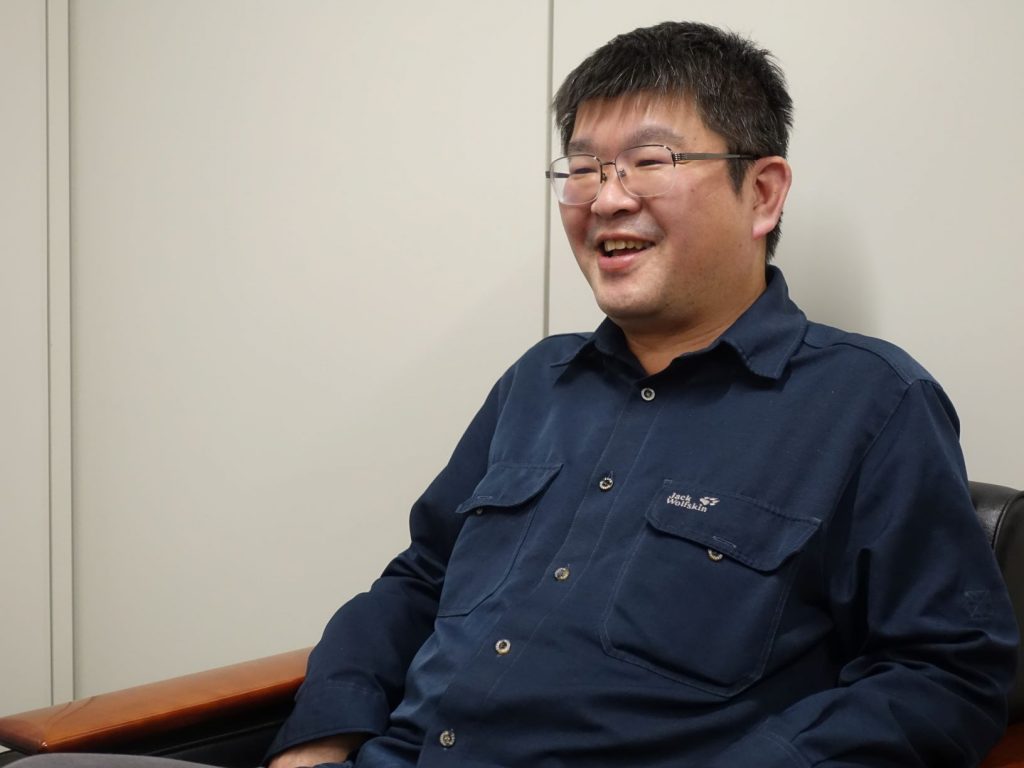
Estimating Age, Reproductivity, Feeding Habits
To begin with, what can you tell us about the work of the Ecosystem Studies and Population Biology Divisions?
Our main job is to conduct research based on samples taken from whales caught at sea. Specifically, we estimate the animals’ ages based on earplugs and eye lens samples, or their reproductive status based on samples from reproductive organs.
We also investigate their nutritional status and feeding habits based on their stomach content, which has been my responsibility for many years.

Strenuous Research with Incredible Trips to the Antarctic
The contents of whale stomachs seem like they would be quite heavy, and quite pungent as well.
That’s true. I first became involved in this type of study when I was in university. It is what we call a ‘3K job’ in Japanese, with the three K’s standing for the Japanese words meaning dirty, demanding, and dangerous.
They told me ‘You’re young, so you’ll be able to work hard,’ and signed me up as a temporary researcher. That way, I was able to ride along on the ships.
Actually, it wasn’t like I had any particular interest in researching stomach contents. My real motivation was getting a chance to travel to the Antarctic Ocean. I’d wanted to go since I was a child, and the only options were to join an Antarctic research expedition, or join the Self Defense Forces and become a crew member on the “Shirase” research ship.
Tours to Antarctica finally began being offered while I was a university student. But then around the same time research whaling also began, and I thought “that’s another way to go!”
I asked around, and somehow was able to become a temporary researcher.
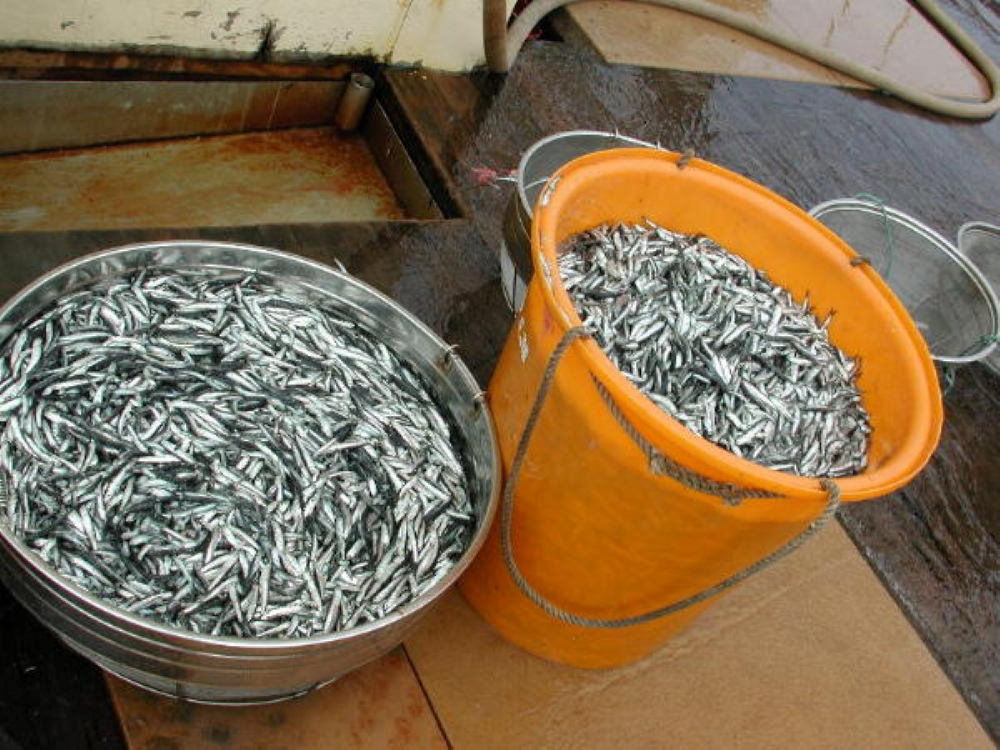
Learning Whales Eat Krill, Fish, and Even Birds!
It sounds like you really wanted to go to the Antarctic?
Yes I did. I even went to Hokkaido University to study Plankton Biology, because I thought that would be the quickest way to get on an Antarctic research trip. I went all the way to graduate school, but at the time I wasn’t thinking about jobs related to whales. I was thinking I would do research on seals.
Just as I was about to travel to Russia for seal research, the Gorbachev government collapsed and my visa application was rejected. I was already taking a leave of absence from my studies at university and I wasn’t sure what to do next.
One of my professors introduced me to a job as a messman on a ship, and so for a while I lived onboard. Maybe because I had that experience, later when I was taken on as a researcher for studying the contents of whale stomachs, I had no problems with sea sickness. And it turned out the research was actually quite interesting.
Their stomachs contain tiny creatures like krill, but also large fish, and even birds that they’ve gulped down while feeding.
Without thinking much about it, I would talk about how interesting and amazing the work was, until someone said, ‘If you feel that way why don’t you make this your research topic?’ And that led me to where I am now.
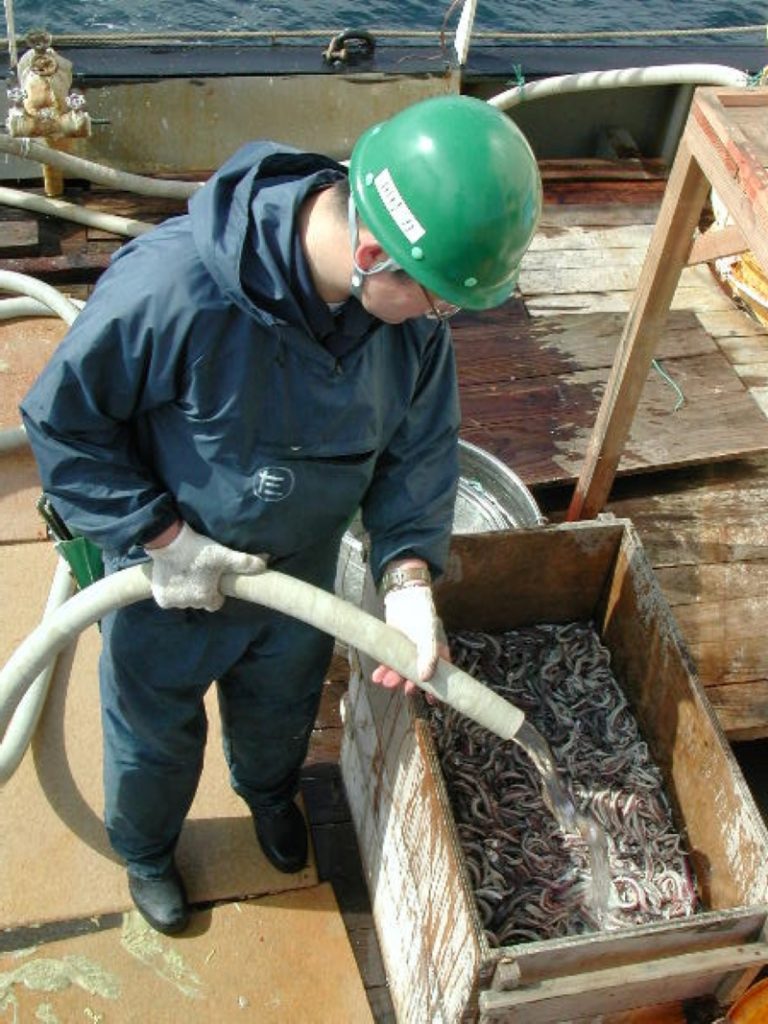
Figuring Out the Foods Whales Consume
Wasn’t your path a rather unique one?
First I finished my master’s thesis on krill, but then moved on to assisting a researcher at what was then called the National Research Institute of Far Seas Fisheries. That’s when I first got involved in genuine research.
The research was challenging, because it involved actually capturing whales. Antarctic minke whale stomach contents weigh several hundred kilograms, but those of sei whales weigh close to a ton. It’s a big challenge just to investigate what is in their stomachs. And of course some of the contents are partially melted down from stomach acids.
Examining the things you find and trying to figure out what they were was difficult, but it was also very rewarding. Whale diets vary greatly depending on the ocean region and species.
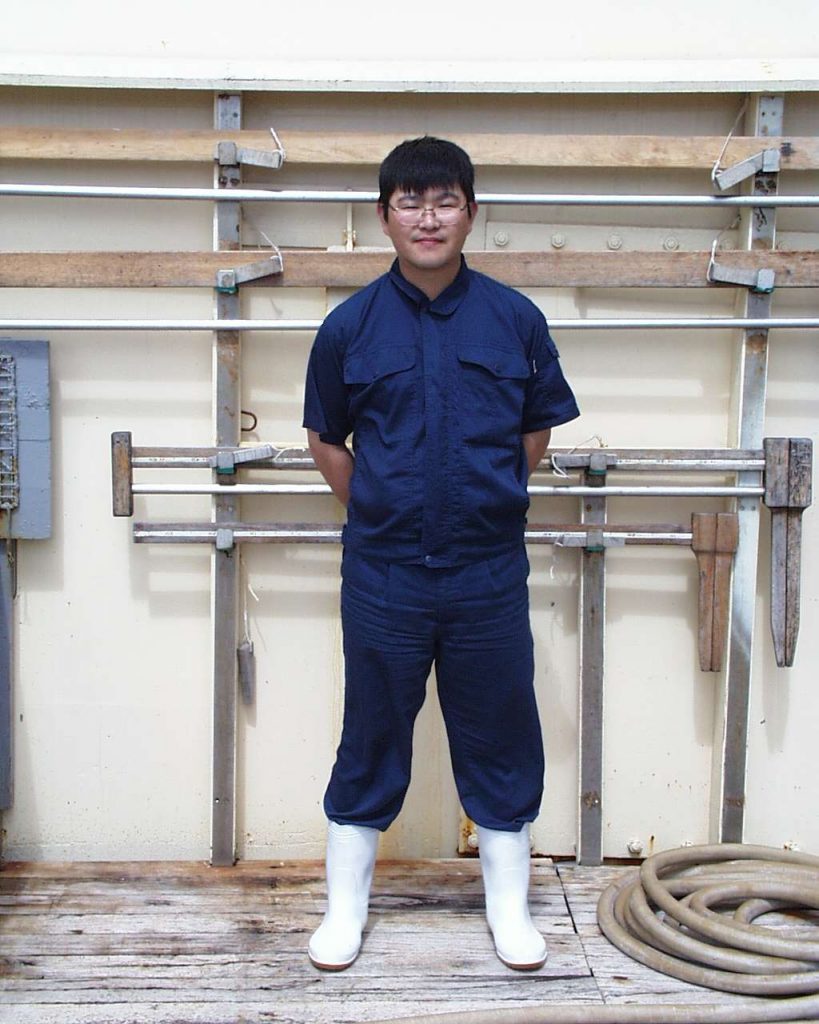
Impacts of Global Warming: Changing Diet, Warming Waters
Is there a difference in what whales consumed in the past and what they eat now?
For whales that inhabit the southern hemisphere, there is very little change. There is an abundance of krill in the Antarctic, so that is mainly what they eat, although it also depends on the species.
On the other hand, there have been big changes in the feeding habits of whales in the Northern Hemisphere. As an example, in the period from 1990 to 2000, the discovery that minke whales eat saury (known in Japanese as sanma), Japanese squid, and Japanese anchovy was sometimes even picked up in the news. When saury stocks later decreased, whale stomachs contained Japanese sardine and mackerel.
So sometimes whales change their diets as certain foods decrease, while other times they may shift to new habitats because of changes in water temperature. They even change migration locations when the fish they feed on disappear.
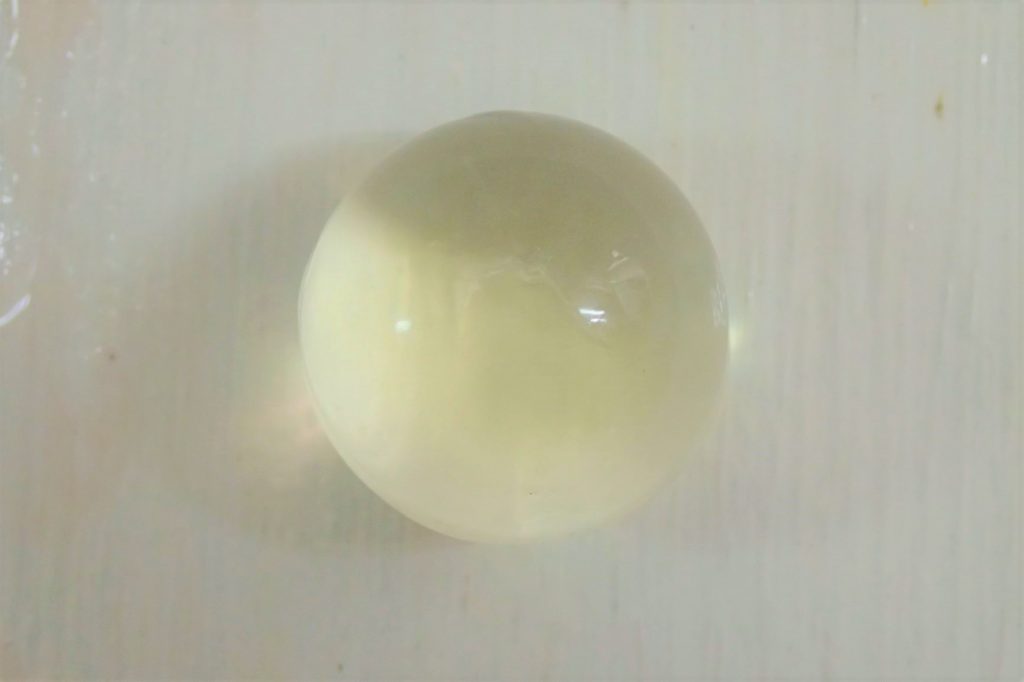
Cleaner Research, Same Sustainability Goals Continue with Commercial Whaling
Are there any differences in how research was carried out during the research whaling era, compared to now in the commercial whaling era?
It is very different. For research whaling, when we did coastal research we weren’t allowed to cut up whales onboard ships. We would bring the entire whale back to shore, then dissect it as we conducted our research.
Now the stomach contents are investigated on board, so we can dispose of most of the contents at sea, which is much more sanitary. If you bring it to shore it becomes waste material, and that is a lot more expensive to dispose of.

Advances Help Deduce what Whales Eat from Skin Samples
Now that your research is done mainly onboard the ships rather than onshore, do you have trouble collecting enough data?
We have to come up with new ways to carry out our research. Because even now that commercial whaling has returned, the goal of sustainable use has not changed. It is still important to carry out proper research and set quotas based on science.
Also, while visual surveys are widely conducted in anti-whaling countries, there are few countries that can perform research with whales that can be captured and analyzed. From this perspective, Japan plays a big role.
Technology advances every day, and now it is possible to deduce to some degree from skin samples what whales are eating and how well nourished they are. I hope we can develop such techniques more in the future, and contribute to the further sustainability of the species.
.
Read the Kujira Town article in its original Japanese at this link.
(This article is published in cooperation with the Institute of Cetacean Research in Japan. Let us hear your thoughts in our comments section.)
Author: JAPAN Forward

